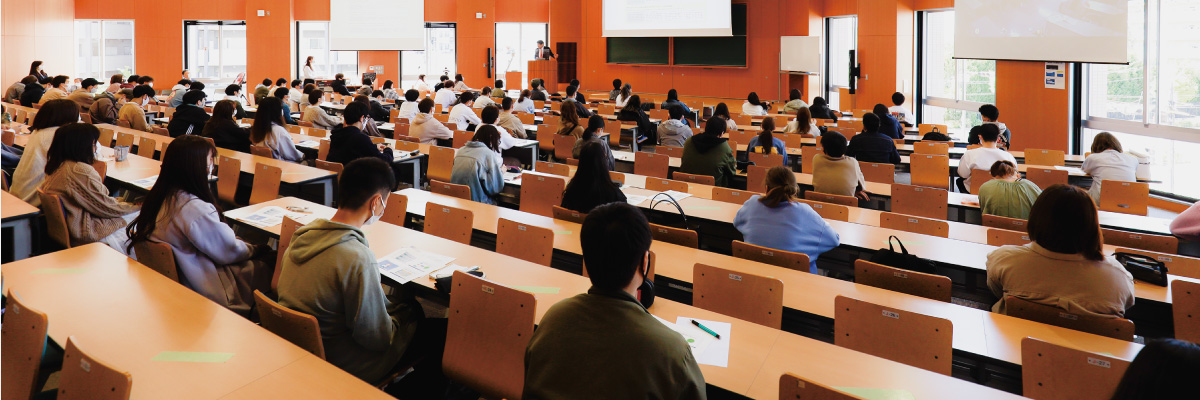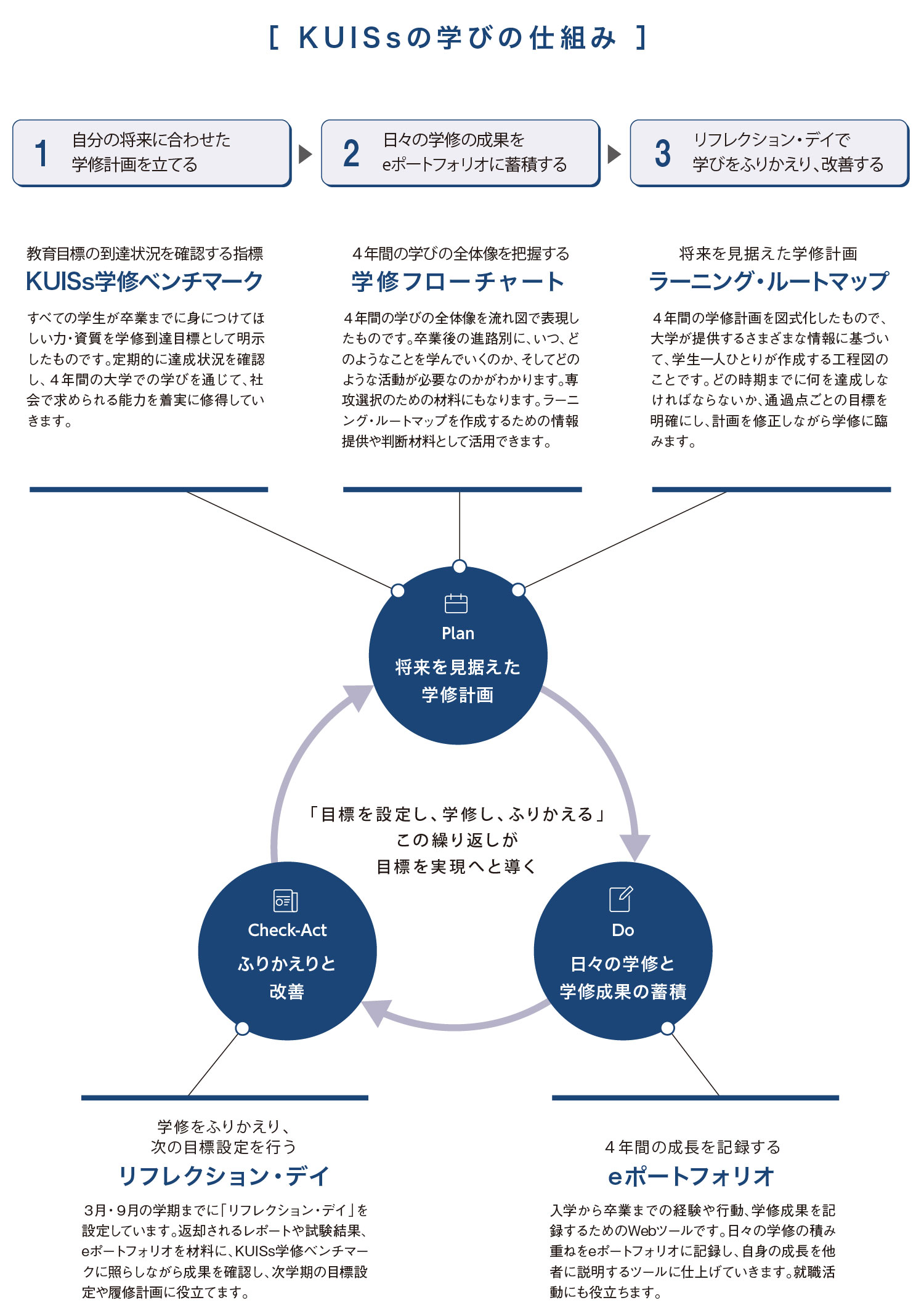
Educational goals, learning mechanisms, and educational perspectives
Educational goals of Kansai University of International Studies
Based on the Fundamental Law of Education and the School Education Law, Kansai University of International Studies develops human resources who acquire specialized knowledge and skills based on a global perspective and who can use them comprehensively to create a safe society and community. It is intended to (School Regulations, Article 1)
<Education Philosophy of Kansai University of International Studies>, we have set the following educational goals. (School Regulations Article 1-2)
- Autonomous and subjective attitude (autonomy)
- Attitude to actively contribute to society (social contribution)
- Ability to understand and accept diverse cultures and backgrounds (diversity understanding)
- Ability to find and solve problems
- Communication skills
- Ability to utilize specialized knowledge and technology
To achieve these educational goals<KUISs learning benchmark> is set.
The KUISs Learning Benchmark specifies the skills that all students should acquire by the time they graduate as learning goals, and serves as a compass for the four years of study.
Students will regularly check their progress and steadily acquire the skills required by society through four years of university study.
KUISs learning mechanism that leads to goal realization
In order to survive in an unpredictable era such as the evolution of AI, the acceleration of globalization, the rapid declining birthrate and aging population, and the frequent occurrence of large-scale disasters, in the future society, we will need to think independently and act with goals. required to wake up.
Each student sets their own goals, studies, and regularly reflects on their goals to take the next step.
At Kansai International University, students"Plan-Do-Check-Act for Learning"By repeating this, I hope that you will be able to enrich your four years of study and be able to talk about your own growth in your own words.
We have several tools for that.Make effective use of these tools and realize the results of your four years of study.

Learning route map
At our university, each student creates a four-year learning blueprint called a learning route map during their first-year education class by working backwards from their career path and goals for the next four years.
Whether you are a company employee, a public employee, a teacher, a medical worker, etc., you will approach learning by clarifying goals for each milestone, such as what you must do and when.We will brush up according to each semester and opportunity.
Learning flowchart
Each faculty has a flow chart that expresses the overall picture of four years of learning, such as subject placement, major learning, and collaboration between subjects.
You can find out when and what you will learn and what activities you will need to do depending on your career path after graduation.
It also describes conditions such as when to choose a major, when to participate in experiential learning such as global studies and community studies, and what you need to do before making that choice.
It can be used as information provision and judgment material for creating a learning route map.
e-portfolio
Accumulation of daily learning is important for achieving future goals.Students will record their experiences, actions, and learning outcomes from the time of admission to graduation in an e-portfolio, and will study while looking back. A record of your four years of student life will also be useful when looking for a job.
Rubric
In order to evaluate the abilities that individual students should acquire, we need indicators to measure their performance.
At our university, we develop and use rubrics (evaluation criteria) as the best tools for evaluating performance, and are working to improve the abilities of individual students.
reflection day
At our university, just before the spring and fall semesters, we have a "Reflection Day" where students can reflect on their studies.
Using returned reports, exam results, and e-portfolios as materials, students can check their achievements in light of learning benchmarks and use them to improve the next semester.
The accumulation of these efforts will lead to the achievement of the KUISs learning benchmark.
Develop future-oriented human resources from three perspectives
Today's globalized world is full of risks that were unimaginable in the past.Not only natural disasters and epidemics, which are becoming more severe, but also corporate management and the maintenance and management of social systems, different ideas and responses are required in all situations.
Therefore, at our university, we develop education based on the three perspectives of "global," "safety," and "management" as "competence that all faculties and departments should have."We are working to develop human resources who can build and operate a safe and secure society while understanding diverse values.Acquire the power needed in the future and aim for a great success.
